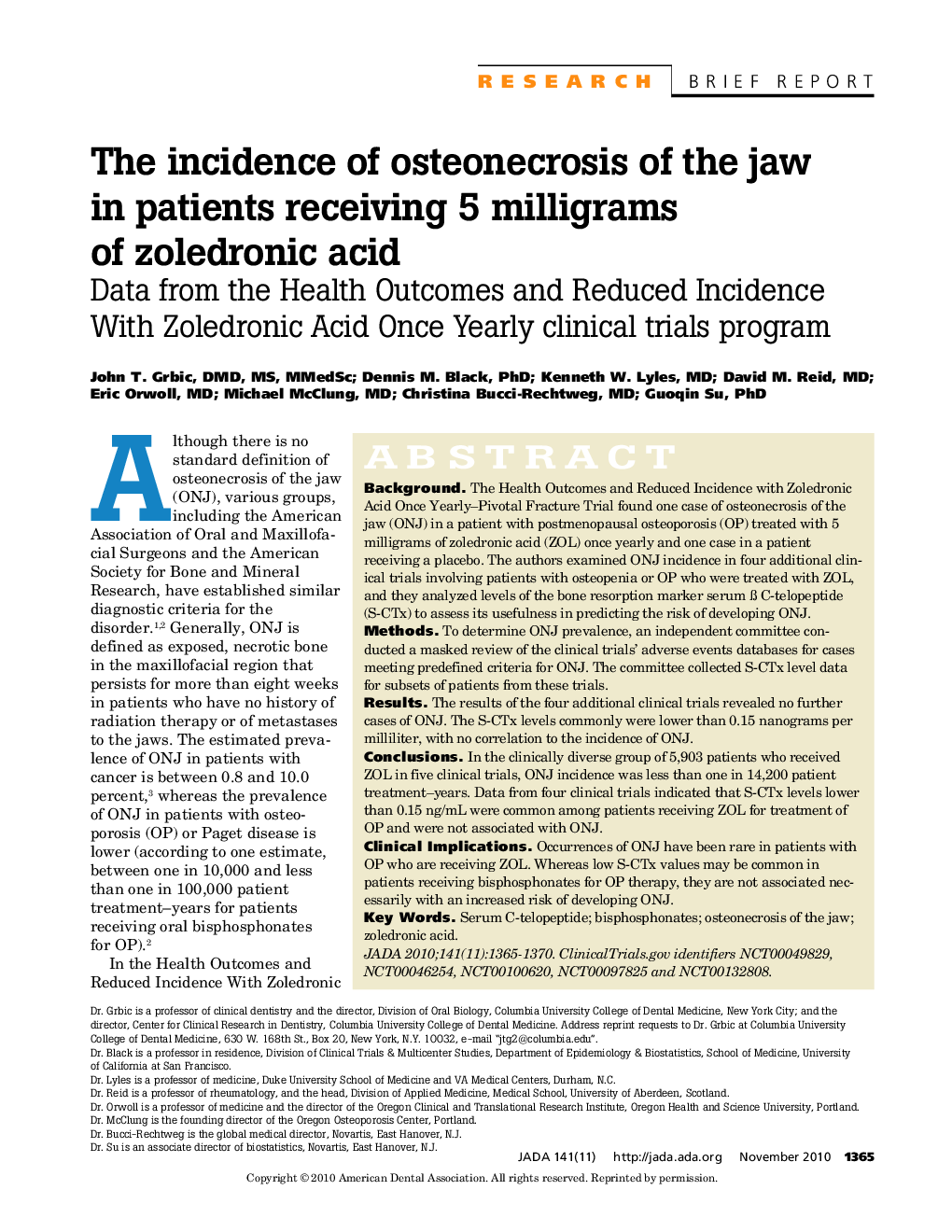| Article ID | Journal | Published Year | Pages | File Type |
|---|---|---|---|---|
| 3138472 | The Journal of the American Dental Association | 2010 | 6 Pages |
ABSTRACTBackgroundThe Health Outcomes and Reduced Incidence with Zoledronic Acid Once Yearly–Pivotal Fracture Trial found one case of osteonecrosis of the jaw (ONJ) in a patient with postmenopausal osteoporosis (OP) treated with 5 milligrams of zoledronic acid (ZOL) once yearly and one case in a patient receiving a placebo. The authors examined ONJ incidence in four additional clinical trials involving patients with osteopenia or OP who were treated with ZOL, and they analyzed levels of the bone resorption marker serum β C-telopeptide (S-CTx) to assess its usefulness in predicting the risk of developing ONJ.MethodsTo determine ONJ prevalence, an independent committee conducted a masked review of the clinical trials' adverse events databases for cases meeting predefined criteria for ONJ. The committee collected S-CTx level data for subsets of patients from these trials.ResultsThe results of the four additional clinical trials revealed no further cases of ONJ. The S-CTx levels commonly were lower than 0.15 nanograms per milliliter, with no correlation to the incidence of ONJ.ConclusionsIn the clinically diverse group of 5,903 patients who received ZOL in five clinical trials, ONJ incidence was less than one in 14,200 patient treatment–years. Data from four clinical trials indicated that S-CTx levels lower than 0.15 ng/mL were common among patients receiving ZOL for treatment of OP and were not associated with ONJ.Clinical ImplicationsOccurrences of ONJ have been rare in patients with OP who are receiving ZOL. Whereas low S-CTx values may be common in patients receiving bisphosphonates for OP therapy, they are not associated necessarily with an increased risk of developing ONJ.
